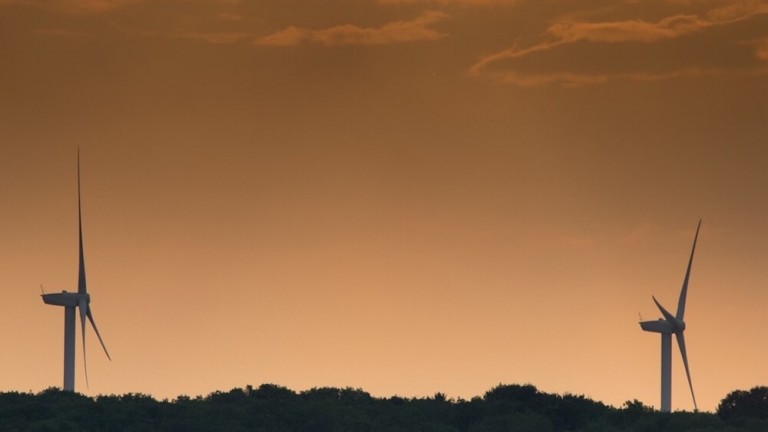IoT Applications: Energy Infrastructure

Shifts in the Energy Sector
In January of this year, the United Nations called for an “urgent” transition from fossil fuels to renewable energy, with the goal of achieving net zero emissions by 2050. It’s a refrain that by now has become both urgent and familiar, typically framed by the threat of a “disaster that can only be stopped by weaning ourselves off our fossil fuel habit.”
The truth is, the oil and gas industry has a long history of innovation, and is already well-positioned to spearhead this global shift. Even without the threat of an impending climate crisis, traditional financial models for the industry are already facing significant challenges, and recent power grid failures in the U.S., one of the world’s most developed nations, only add to the pressure on legacy corporations to develop new, more sustainable solutions.
Utilities and public/private partnerships have begun to modernize infrastructure aggressively, deploying millions of smart meters to improve delivery efficiency. At the same time, the voluntary carbon market is gaining momentum, with credit incentives for projects focused on emissions avoidance and reduction.
The future of energy infrastructure is already taking shape, and IoT technology is leading the way.
Builder Spotlight
NICIGAS
NICIGAS partnered with Soracom for an ambitious deployment of nearly a million smart utility meters over the course of the 2020 fiscal year. SPACE HOTARU, an original concept by NICIGAS developed with Soracom partner Unabiz, retrofits easily to enable “smart” features for existing gas meters.
The Network Controlling Unit (NCU) delivers gas consumption to NICIGAS’ IoT data platform, “NICIGAS Stream,” via Sigfox 0G wireless or, where needed, LTE-M. This allows for both monitoring and, when necessary, remote control of gas valves. The energy-efficient NCU is designed to last more than 10 years on internal batteries.
Since the adoption of the new smart reader, data that used to be collected by hand once a month is now collected by the NCU on an hourly basis, and sent to NICIGAS Stream daily. Collected data is used to visualise and predict the amount of gas remaining in households, allowing more timely replacement of gas cylinders and improving quality of service for consumers.
Read more about the technology here.
LineVision
LineVision’s pioneering monitoring systems give power utilities unprecedented, moment-to-moment insight into the health and capability of the high-voltage transmission lines that move power from generating sites (like power plants) to electrical substations for local distribution.
These wireless, non-contact monitors continuously monitor the electrical and physical properties of transmission lines, increasing the capacity, flexibility and safety of the grid. As power providers look more and more to renewable energy sources, this dynamic line rating capability will become increasingly valuable. Because power generated by renewables like wind can come in bursts, optimizing for maximum safe carrying capacity reduces waste and ensures efficient distribution.
Read more about LineVision here.
TOKU Systems
TOKU Systems gives oil and gas producers continuous, real-time visibility into the operating condition of pipelines, wells, tanks, pump jacks and other critical infrastructure.
The physical design of the TOKU sensor allows on-site installation and configuration in as little as 10 minutes. The fully autonomous TOKU sensor continuously captures second-by-second pressure data, uses cellular communication to send data and immediate cry-out notifications of alarm conditions and has a 360-degree solar panel allowing for self-sustainability.
Read more about TOKU systems here.
LoRa Alliance
The non-profit LoRa Alliance enables large-scale deployments of Low Power Wide Area (LPWA) IoT networks through the LoRaWAN® open standard. As of 2021, the LoRa Alliance has become one of the largest alliances in the technology sector, with a growing ecosystem of active contributors.
One team is now developing solar panels that automatically sense where the sun is and reposition an entire field of solar panels to the right angle for maximum energy. Applications are possible in isolated areas where cellular connectivity is unavailable.
Learn more about the initiative here.
Teltonika
Teltonika, a leading provider of LTE routers, gateways, and modems for IoT, has documented a solution for connecting wind turbines to a unified system for remote monitoring, energy generation reporting, parameter control, and predictive maintenance.
The wind turbine generates energy which gets passed to a substation. The entire system is controlled and remotely monitored through a wind turbine controller connected to Teltonika’s small but powerful TRB145 4G LTE Serial gateway.
Learn more about the solution here.
IHI Corporation
IHI Corporation works around the world to deliver everything from industrial and agricultural systems to aerospace products and even nuclear reactors.
IHI’s power generation team provides comprehensive services across the complete lifecycle of gas turbine power plants from design and manufacture to installation and maintenance.
Because these power plants are often located in remote areas, IHI has pioneered a variety of monitoring and maintenance capabilities. IHI’s first remote monitoring system was introduced in 1995. Today, IHI uses Soracom Gate to remotely monitor remote stations and, when necessary, engage secure remote control of equipment parameters without sending data over the public internet.
———
Looking for the best way to get your device connected to the cloud over cellular? Soracom is the world’s leading IoT platform for technology innovators.
To get started, visit the Soracom store and order our IoT SIM card now!



